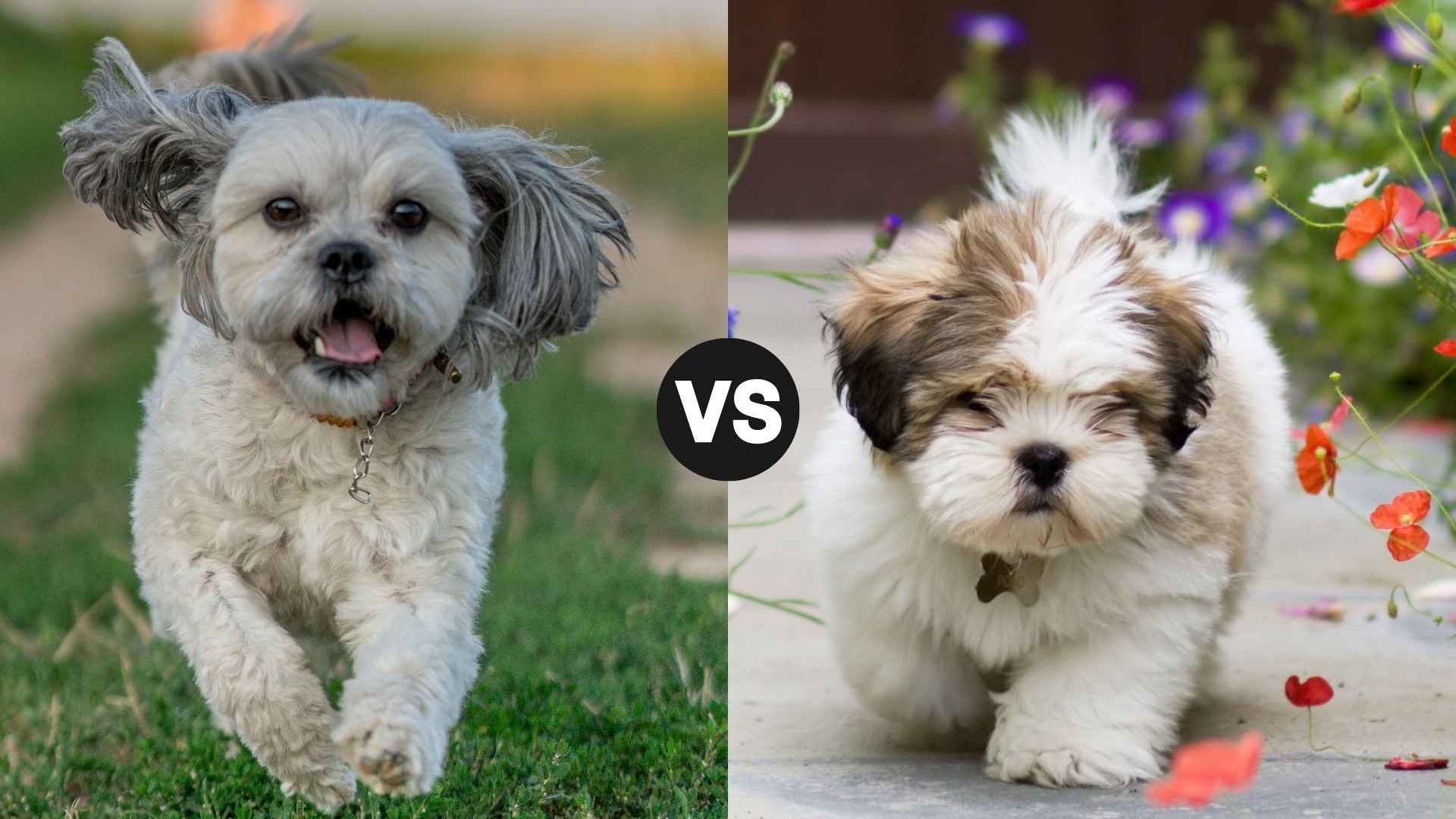They both look like fluffy royalty. They both have ancient roots. And they both make amazing lap warmers. But if you’re stuck choosing between a Shih Tzu and a Lhasa Apso, you’re not alone—these two breeds are often mistaken for each other, and it’s not hard to see why.
With their silky coats, compact sizes, and dignified personalities, the Shih Tzu and the Lhasa Apso are like canine cousins who were raised in different kingdoms.
One was bred for life inside Chinese palaces, the other for guarding Tibetan monasteries. Royal, protective, affectionate, and full of personality—they each bring something unique to the (grooming) table.
In this friendly face-off, we’ll dive into everything you need to know to make the best choice for your lifestyle. From grooming and temperament to training and temperament, we’re helping you decide whether a Shih Tzu or Lhasa Apso is your perfect pint-sized partner.
Let the fluff battle begin!
Shih Tzu vs. Lhasa Apso
Size and Weight Differences
Don’t let the fluff fool you—these little dynamos pack a lot of personality into a travel-sized body. Here’s how the two stack up when it comes to height and weight:
Shih Tzu:
Once upon a time in the snowy mountains of Tibet, the Lhasa Apso was bred by monks to guard Buddhist monasteries —not by tackling intruders, but by barking like a furry siren. Regal and alert, the Lhasa Apso breed was considered a sacred sentinel, a fluffy little lion with a bark that could probably wake up Buddha.
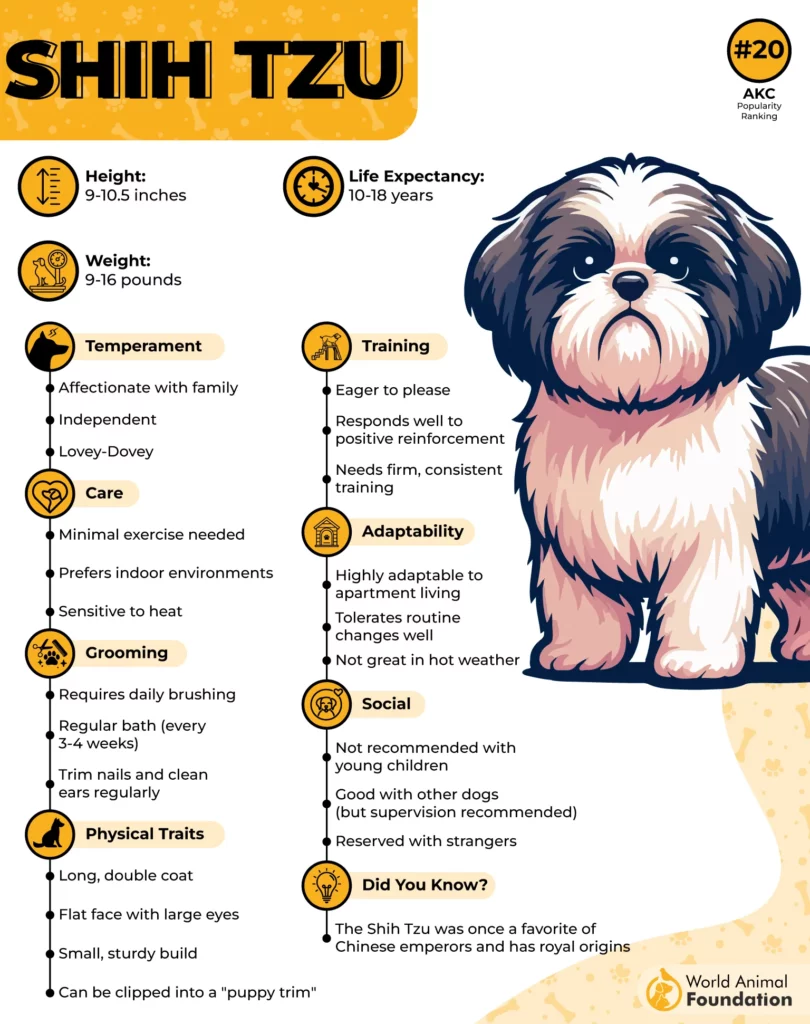
Height: 9 to 10.5 inches (at the shoulder)
Weight: 9 to 16 pounds
Lhasa Apso:
Meanwhile, in the palaces of ancient China, the Shih Tzu (pronounced “sheed-zoo,” not “sh*t-zoo”—get it right before you get the look) was living the pampered life. These dogs were bred from Chinese royalty as royal companion dogs, lounging in the Forbidden City like they paid rent there. As per WebMD, this ancient breed continues to thrive today as a devoted family companion and a standout show dog.
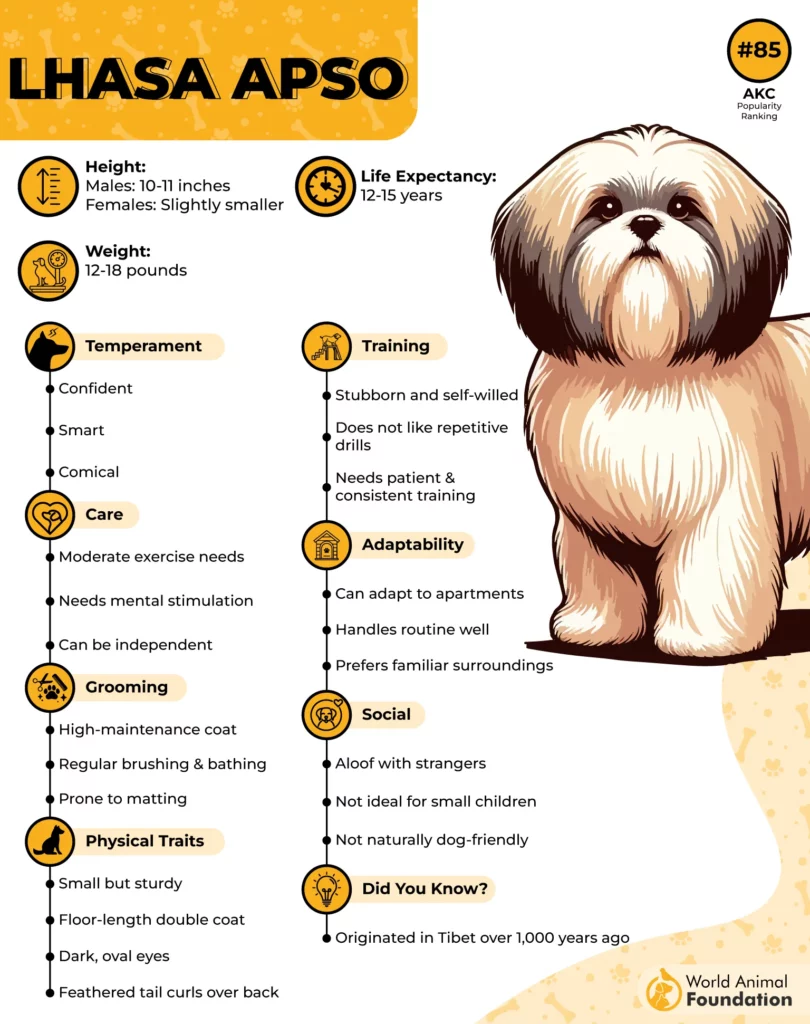
Lhasa Apsos are known for their flowing facial hair and distinctive tails, which make them shine in the ring. Basically, Shih Tzus were the OG influencers—adorable, cutesy, spoiled, and followed everywhere by admirers.
Height: 10 to 11 inches (slightly taller than the Shih Tzu)
Weight: 12 to 18 pounds
Personality and Temperament
Who knew so much sass, charm, and attitude could fit into such tiny, fluffy bodies? Whether you’re looking for a snuggly shadow or a pint-sized security guard with fur, Shih Tzus and Lhasa Apsos each bring their own fabulous flavor to the personality buffet.
Shih Tzu:
The Shih Tzu’s personality can be summed up as: “I was born to be adored.”
They thrive on human companionship and are happiest when they’re right in the middle of family activities.
Friendly and outgoing: Shih Tzus rarely meet a stranger they don’t like. Guests? Delivery people? Random humans at the park? All potential new friends.
Affectionate lap dogs: They love cuddles, snuggles, and being carried like the royalty they believe they are.
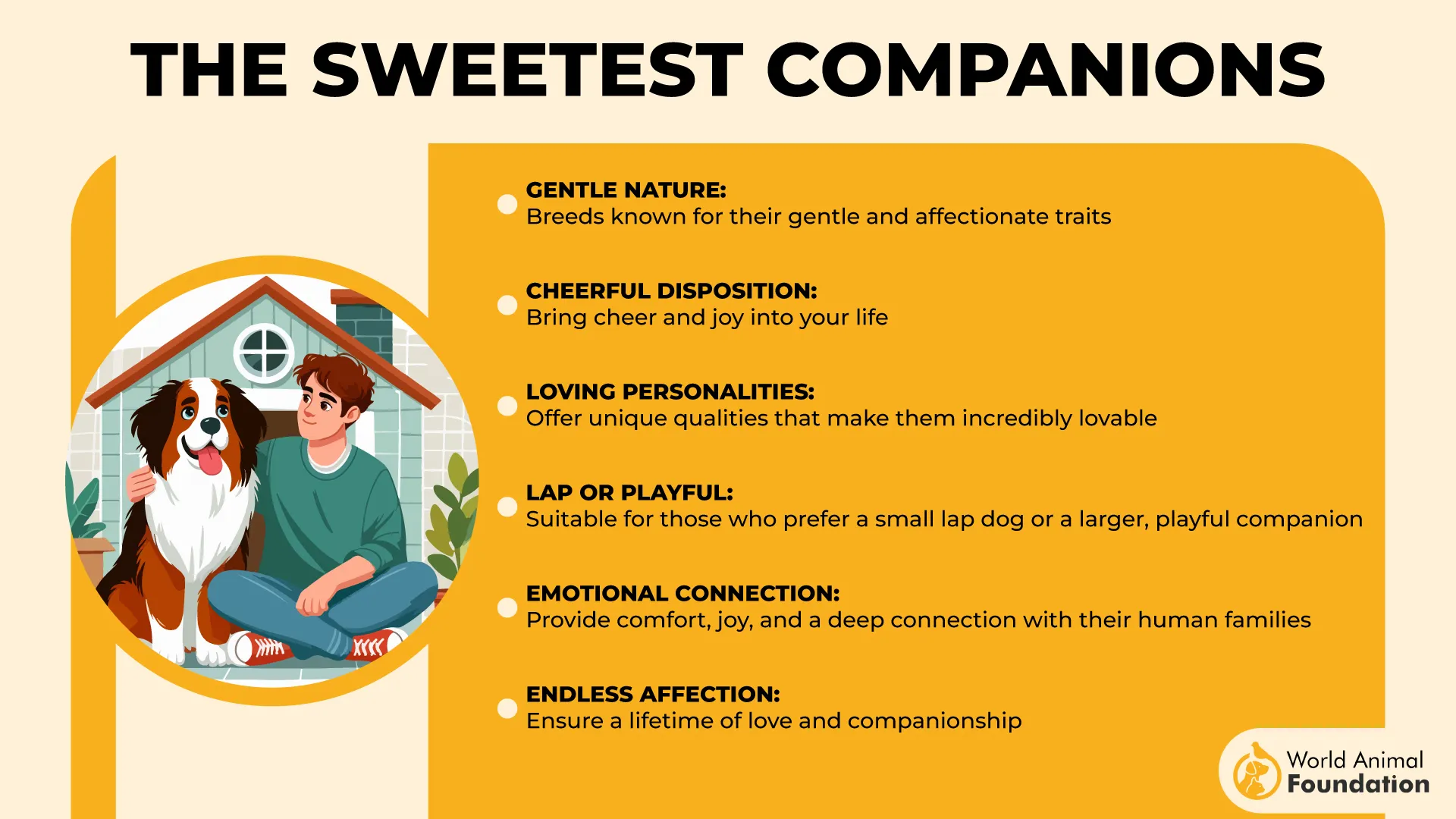
Playful but relaxed: Shih Tzus enjoy a bit of play but won’t run you ragged. After some fun, they’ll happily curl up for a nice, long nap (often in the most inconvenient spot).
Great with kids and other pets: Their gentle nature makes them perfect for families.
Adaptable to most living situations: Whether you’re in a city apartment or a big house, Shih Tzus adjust easily as long as they’re with their people.
In short: The Shih Tzu is a sweet, friendly companion who believes the world revolves around them — and honestly, they’re not wrong.
Lhasa Apso:
The Lhasa Apso may be small, but their attitude? Huge. Originally bred to guard Tibetan monasteries, these dogs still carry that serious watchdog mindset.
Aloof with strangers: Lhasas don’t hand out trust easily. New people must prove themselves worthy of friendship.
Loyal and protective: Once you’re in their inner circle, you’re family for life — and they’ll make sure everyone knows it.
Independent and strong-willed: They definitely have a mind of their own. Lhasas aren’t afraid to make decisions (or ignore your suggestions).
Alert and vocal: Lhasa Apsos are naturally cautious around strangers and make excellent watchdogs. True to their original purpose, they’ll bark to alert their owners of any potential threats.
Playful but self-assured: Lhasas enjoy playtime but don’t demand constant attention. They’re quite content to entertain themselves and enjoy their alone time too.
In short: The Lhasa Apso is a bold little guardian who mixes independence with loyalty, like a wise old soul wrapped in a ball of fluff.
Health Issues and Lifespan Overview
Small dogs, big drama? Sometimes, yes. While both breeds enjoy long, love-filled lives, there are a few quirks and health hiccups to watch for along the way. Let’s break down what keeps these fluffy royalty feeling their best—and how long you can expect to be ruled by them.
Shih Tzu:
Shih Tzus are generally healthy but do have their weak spots. With their adorable squished faces (brachycephalic head shape), they can suffer from breathing issues, heat sensitivity, and snoring that rivals a grown man. Other common health concerns include:
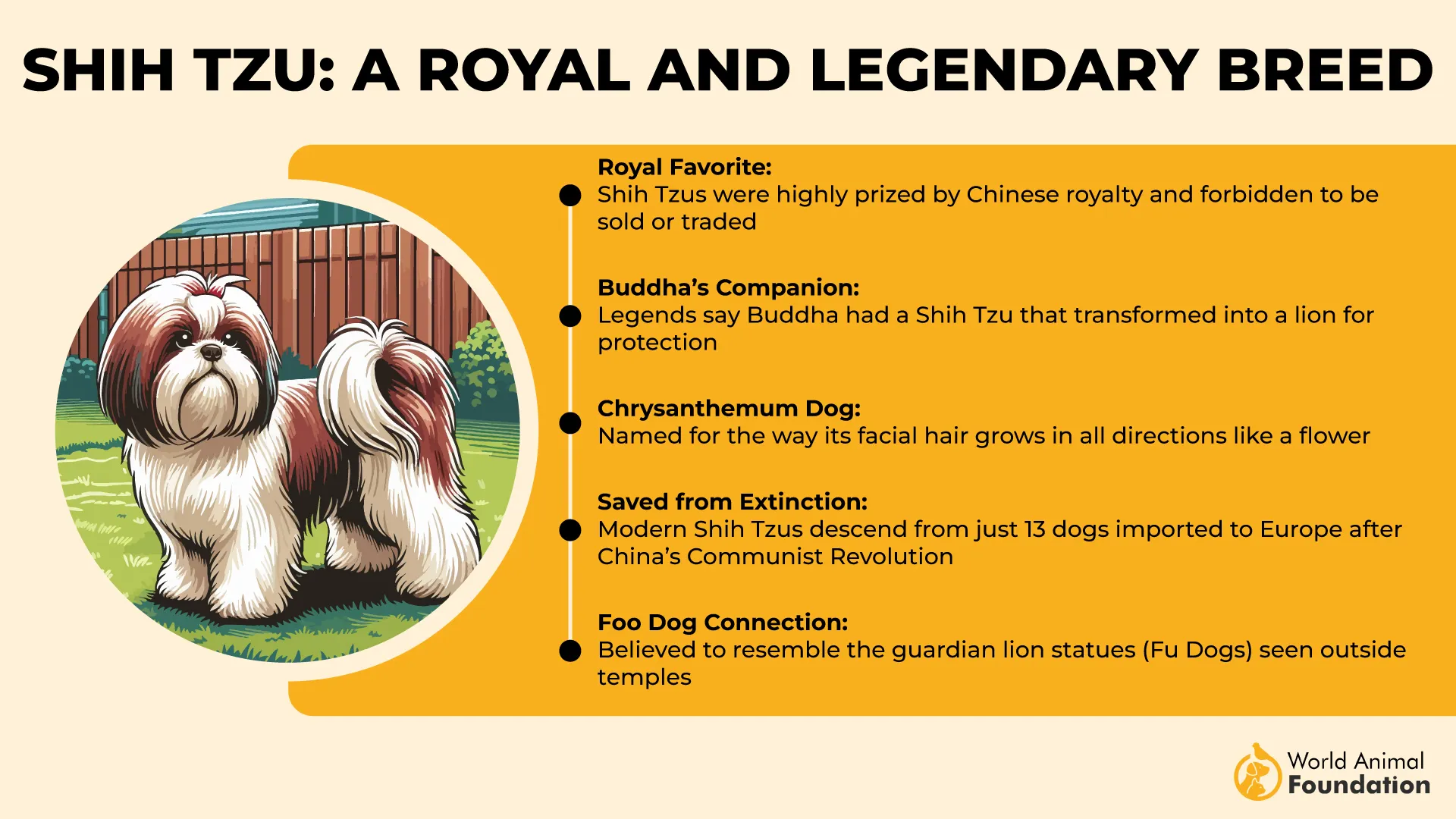
Hip dysplasia
Eye issues (like cataracts and dry eye)
Ear infections (because of all that hair)
Dental problems (small mouth, crowded teeth)
Their lifespan is a solid 10 to 16 years, which means many years of royal pampering, spa days, and tiny bows.
Lhasa Apso:
The Lhasa Apso may be tiny, but they are surprisingly sturdy. They often live a very long time — 12 to 15 years, and sometimes even longer if you spoil them right (which you will).
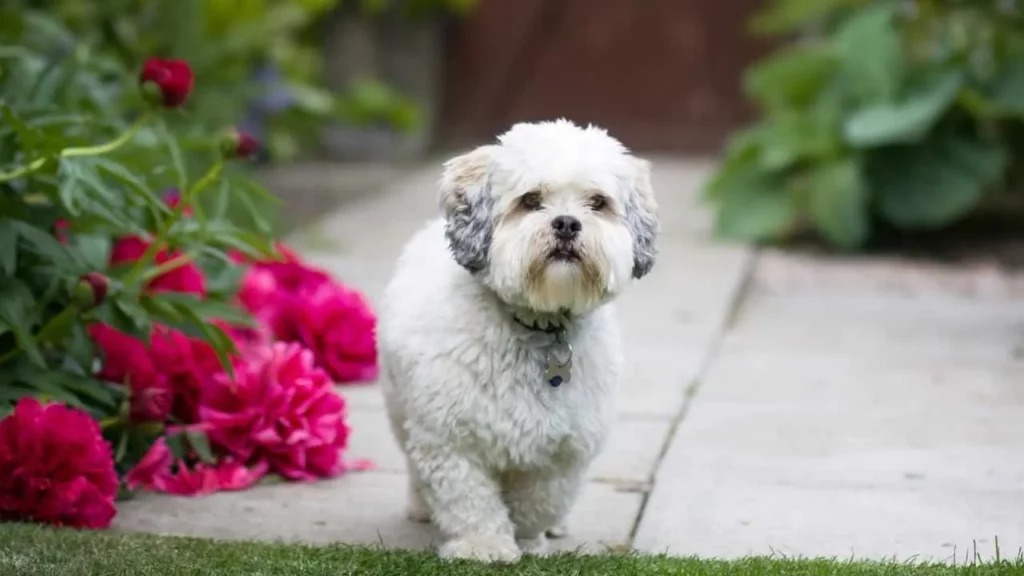
Common health issues include:
Hip dysplasia (yep, even little dogs get it)
Progressive Retinal Atrophy (PRA)
Kidney problems
Allergies and skin issues
Luxating patellas (wobbly kneecaps)
Because of their independent nature, they may try to hide discomfort, so regular vet visits are key. And with that luscious coat? Get ready for grooming sessions that feel like you’re prepping them for the Westminster Dog Show daily.
Energy Levels and Exercise Needs
Let’s be real: neither of these pups is running marathons anytime soon—but they do have their own version of “fit life,” complete with zoomies, naps, and the occasional game of fetch (followed by more naps).
Shih Tzu:
The Shih Tzu is not exactly training for a marathon anytime soon. These little royals prefer short bursts of activity followed by extended relaxation sessions on their throne (aka your lap, couch, or bed). According to the American Kennel Club (AKC), they were bred to spend most of their time indoors in royal palaces. These small dogs are ideal pets for apartment living or homes without large backyards.
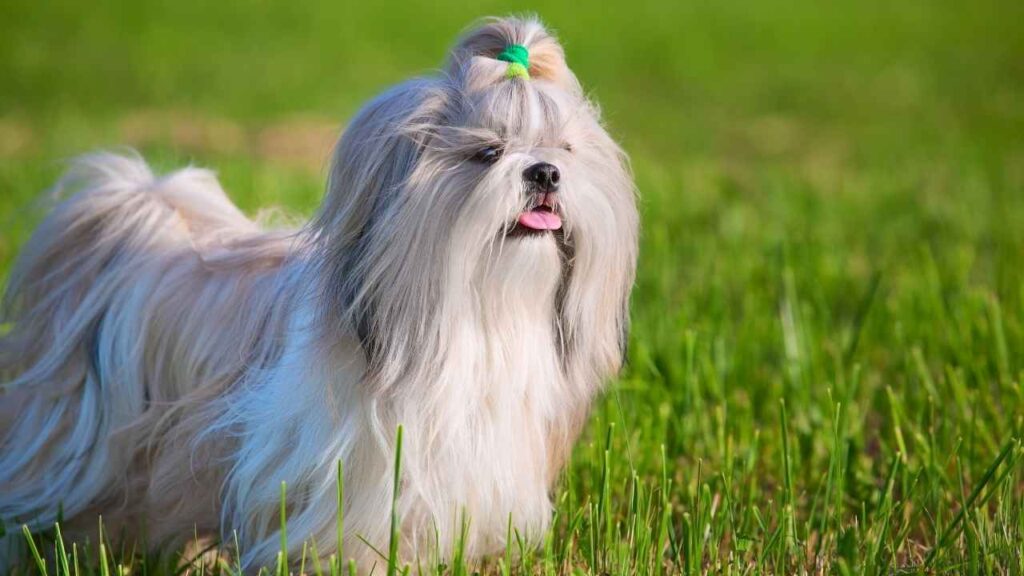
They enjoy daily walks, a bit of playtime, and indoor games like chasing a squeaky toy for exactly 3 minutes before flopping over in triumph. While they may have short bursts of playful energy, they tire out quickly and prefer a good nap (or five) throughout the day.
Bonus Tip: Don’t let their low energy fool you — if they’re bored, they’ll find their own “entertainment” like chewing things they shouldn’t or giving you the sad eyes until you cave in and play with them.
Lhasa Apso:
The Lhasa Apso may be small, but they’ve got a bit more stamina — and a job to do (at least in their own minds). Lhasas love short, brisk walks where they can sniff everything and update their mental security logs.
They enjoy daily exercise but don’t require tons of intense activity. Moderate playtime, walks, and mental stimulation (like puzzle toys) are perfect. While they can have bursts of zoomies, they’re generally happy being part-time watchdog, part-time lap warmer.
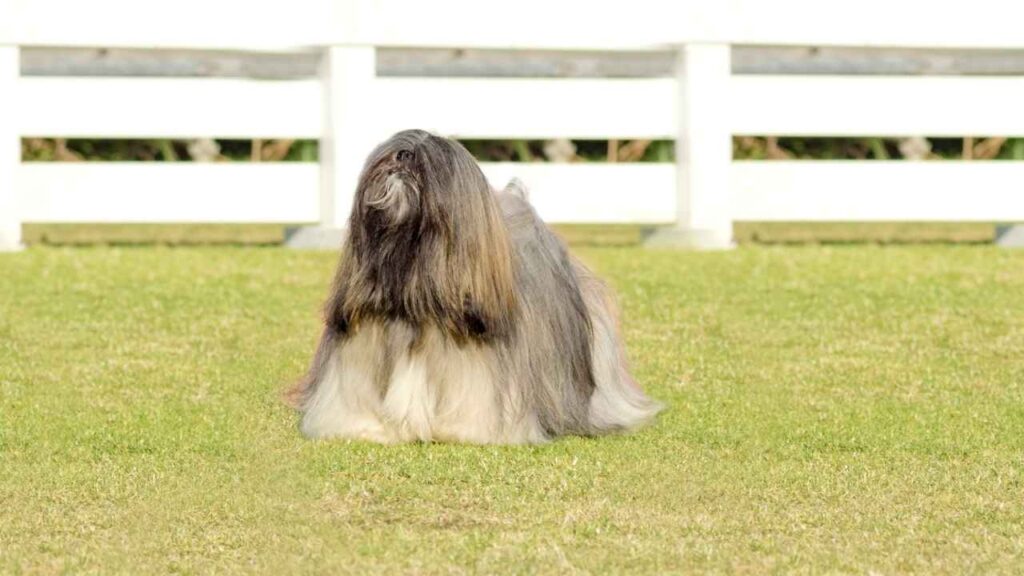
Fun fact: Because of their history guarding Tibetan monasteries, they believe it’s their sacred duty to monitor your house 24/7, bark included.
Dietary Needs and Weight Control
They may be small, but these cuties can eat like they’re prepping for a kibble-eating contest. And with all that glorious fur, it’s dangerously easy to mistake a few extra pounds for “just fluff.” Let’s talk chow and chub.
Shih Tzu:
Shih Tzus have a real talent for convincing you they’re starving… even right after dinner. With their small frames, it’s easy for a Shih Tzu to pack on extra pounds, so weight control is super important.

They thrive on high-quality, small-breed dog food with balanced nutrients.
Watch those treats — they’ll happily overindulge if you let them.
Monitor their weight regularly to prevent obesity, which can worsen breathing, joint, and back problems.
Because of their tiny mouths, dental care is crucial, and softer kibble or small-sized dry food can help.
Pro tip: They will try to negotiate extra snacks with big, round, pleading eyes. Stay strong.
Lhasa Apso:
Lhasas are similarly prone to being little foodies. While they are sturdy dogs, they are still small and can easily gain weight if you give in to those pleading stares.

A balanced, high-protein, moderate-fat diet is ideal to keep their coats shiny and energy stable.
Portion control is key — they won’t say no to seconds (or thirds).
Watch for food allergies — Lhasas can sometimes have sensitive skin and stomachs.
Regular exercise paired with proper portions will help maintain a healthy weight and avoid joint strain.
Fun fact: Lhasas may try to use their watchdog status as an excuse for extra meals: “Guarding is hard work. I earned this snack.”
Grooming Requirements and Allergy Considerations
If you thought “fluff maintenance” was just a joke, think again. Both Shih Tzus and Lhasa Apsos rock those long, luxurious coats—but keeping that fur fabulous takes some serious TLC. And if you or your guests sniffle around dogs, we’ll cover that too!
Shih Tzu:
Ah, yes, the Shih Tzu — the runway model of the dog world. That long, flowing coat looks fabulous, but comes with a serious grooming commitment.
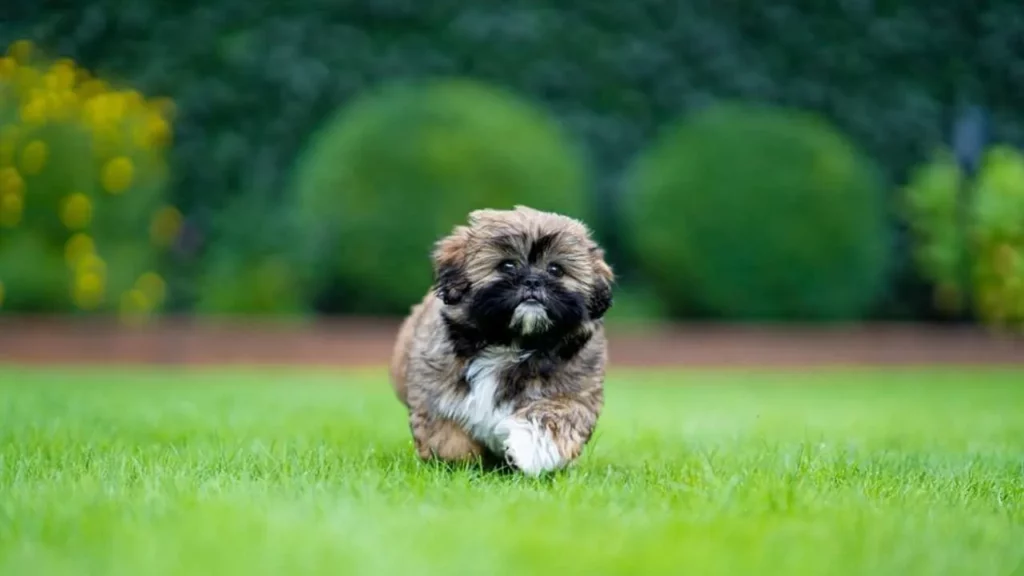
Grooming Needs:
Daily brushing is ideal to prevent tangles and matting. Miss a day, and you may find yourself in a hairbrush battle.
Professional grooming every 4–6 weeks is highly recommended unless you’re a pro with scissors and dog clippers.
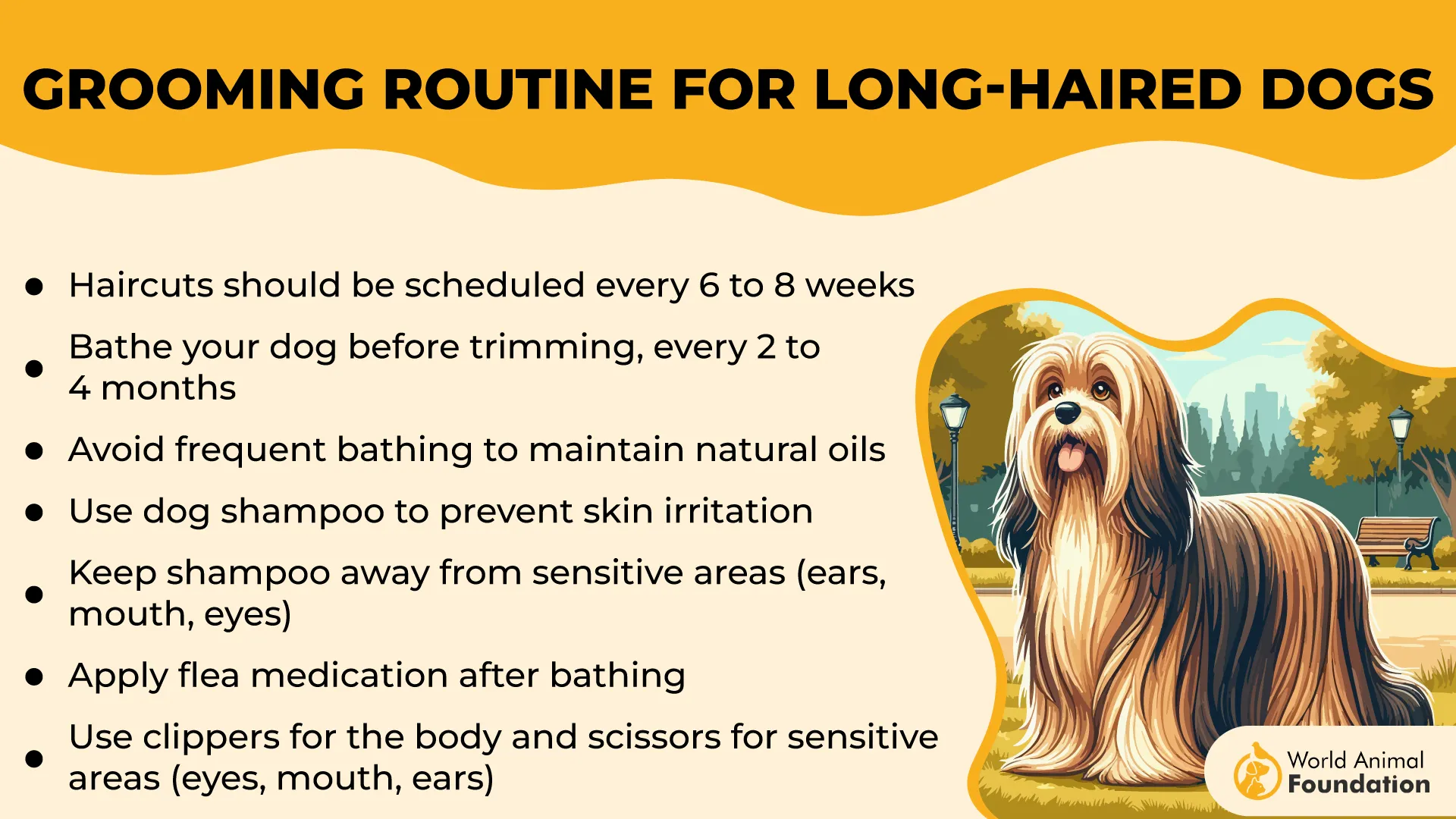
Tear stains around their big, round eyes need regular cleaning.
Regular ear cleaning, nail trims, and dental care are musts, too.
Many owners opt for the “puppy cut” — a shorter style that’s easier to maintain but still super cute.
Allergy Considerations:
Despite all that hair, Shih Tzus are considered more hypoallergenic than many breeds because they have hair, not fur, and minimal shedding.
They do produce dander (like all dogs), so while they’re a better option for mild allergy sufferers, they’re not 100% allergy-proof.
Regular grooming helps control dander and keeps allergy triggers lower.
Fun fact: They may look like tiny mops, but they clean up nicely and expect compliments from every passerby on your walks.
Lhasa Apso:
The Lhasa Apso is like the Tibetan monk who secretly enjoys spa days. Their coat is equally luxurious and impressive, but with a slightly different texture than the Shih Tzu.
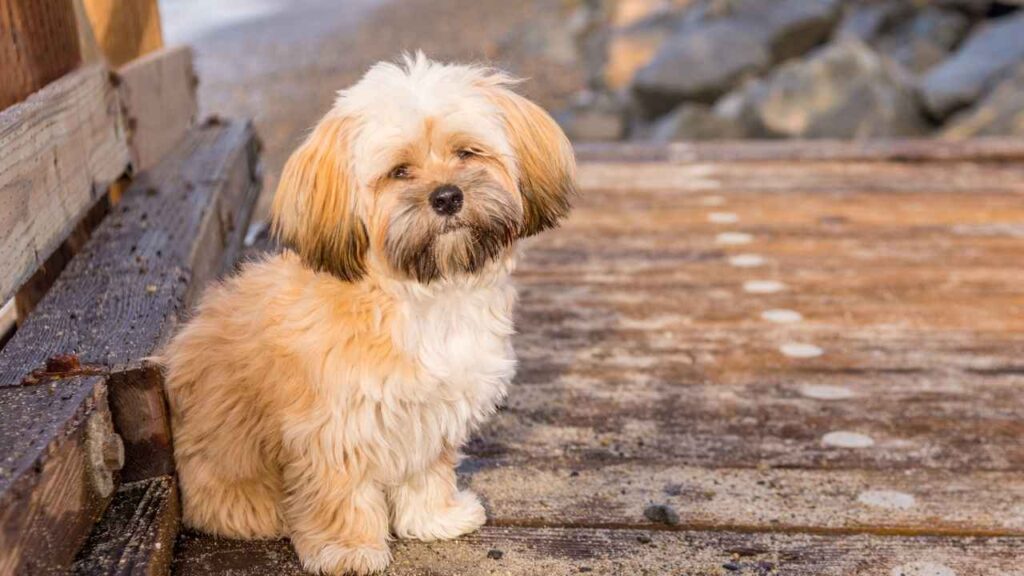
Grooming Needs:
Daily brushing is also ideal here to avoid mats, especially with that long, heavy coat.
Professional grooming is helpful to keep their coat neat (unless you enjoy spending your weekends detangling hair).
The “puppy cut” works wonders for easier maintenance.
Regular eye, ear, nail, and dental care are essential.
Because of their dense double coat, seasonal shedding may happen, though it’s still minimal compared to heavy shedders.
Allergy Considerations:
Like the Shih Tzu, Lhasa Apsos are often considered good for mild allergy sufferers, thanks to minimal shedding.
Their dense coat traps dander and hair, so regular grooming is key to keeping allergens at bay.
Consistent bathing and brushing will help allergy-prone family members breathe a little easier.
Fun fact: Lhasas seem to know just how fabulous they look after grooming. Expect a little strut and attitude post-spa day.
Conclusion
Shih Tzu and Lhasa Apso are closely related companion dogs, both smart and great at learning tricks, yet they differ in key ways. The Lhasa Apso differs from Shih Tzus in physical traits: Lhasa Apso’s coat is a double coat with flowing tresses, and they tend to be slightly larger, sturdier little dogs with a longer muzzle, traits linked to their role as sentinel dogs in the Himalayan Mountains. Shih Tzus, bred for Chinese emperors, are more suited for cuddling than guarding, with shorter legs and a shorter nose.
Both breeds need early socialization and obedience training using positive reinforcement, especially to manage separation anxiety. While both dogs carry good weight and meet their breed standard, the Lhasa Apso, also known as the “lion dog,” can be more stubborn. Despite their differences, two dogs like these make excellent companions for children and thrive when raised with care and attention.


